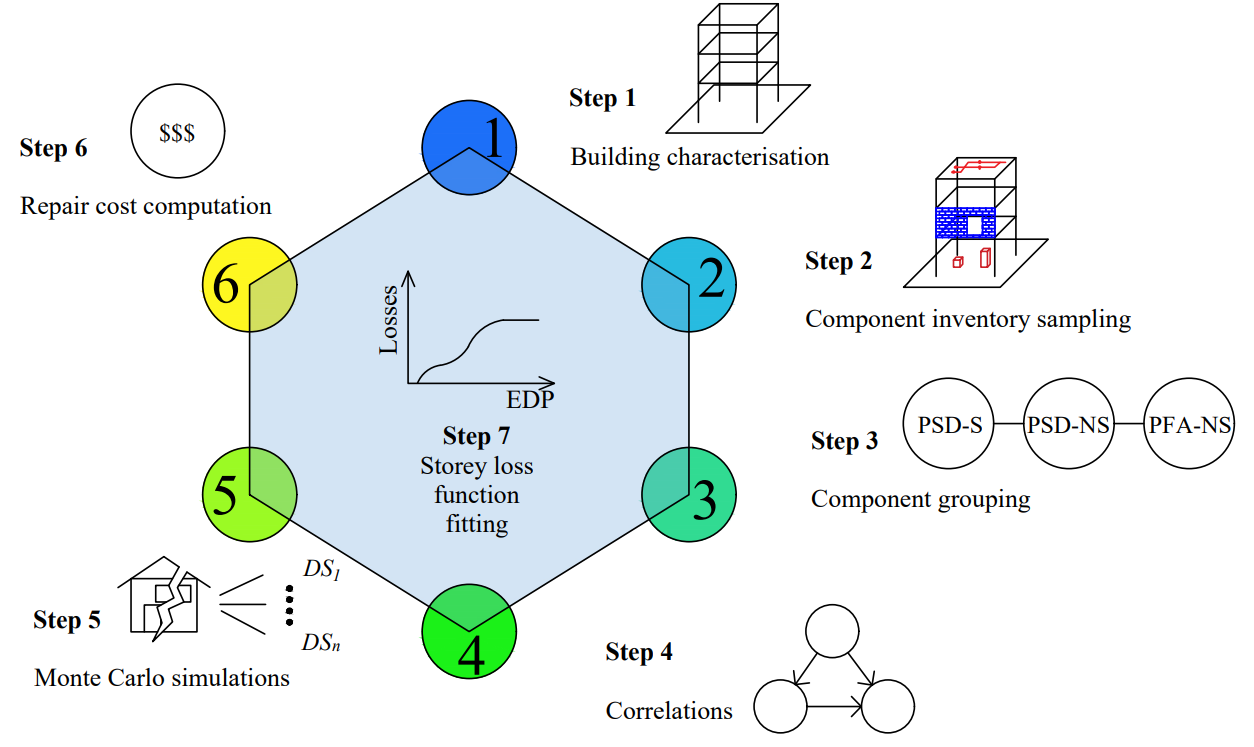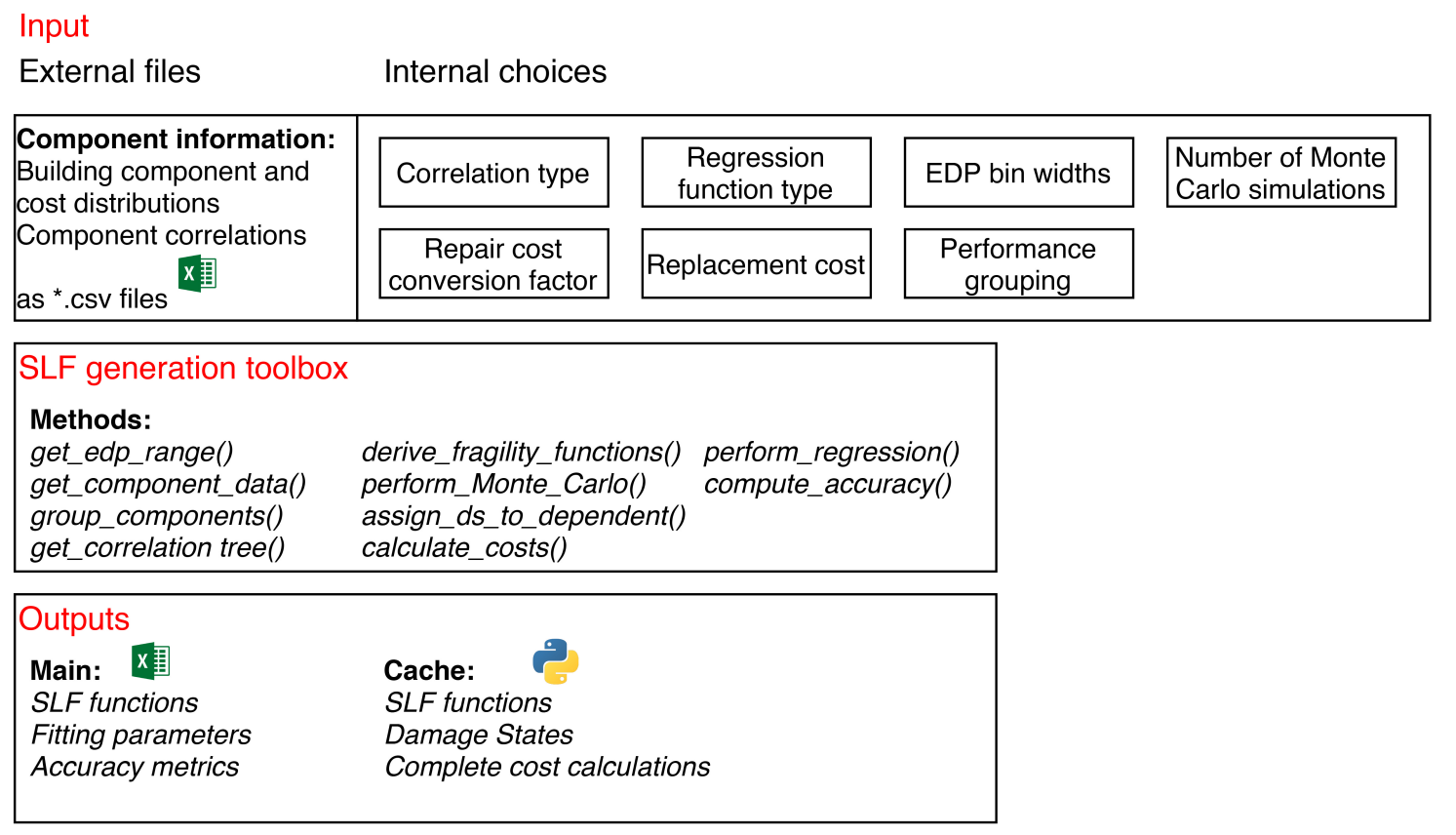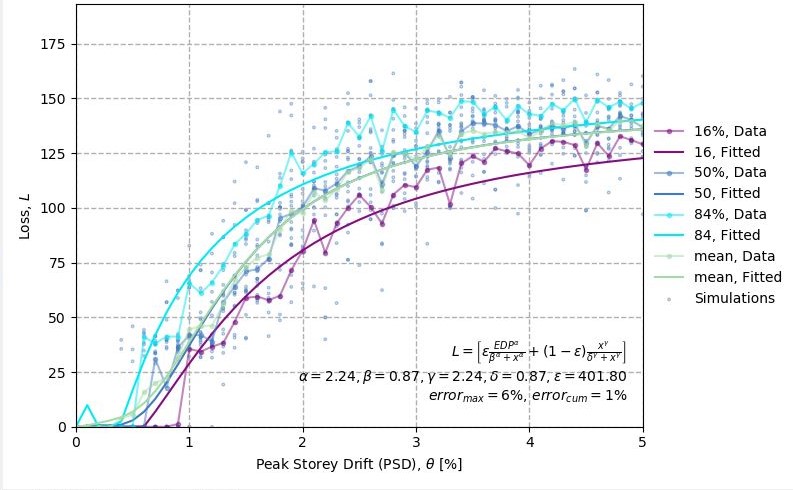Storey-loss function generator to be used in loss assessment.
Project description
Storey-loss-function (SLF) Generator
Performance-based earthquake engineering (PBEE) has become an important frame- work for quantifying seismic losses. However, due to its computationally expensive implementation through a typically detailed component-based approach (i.e. Federal Emergency Management Agency (FEMA) P-58), it has primarily been used within academic research and specific studies. A simplified alternative more desirable for practitioners is based on story loss functions (SLFs), which estimate a building’s expected monetary loss per story due to seismic demand.
These simplified SLFs reduce the data required compared to a detailed study, which is especially true at a design stage, where detailed component information is likely yet to be defined. A Python-based toolbox for the development of user-specific and customizable SLFs for use within seismic design and assessment of buildings. Finally, a comparison of SLF-based and component-based loss estimation approaches is carried out through the application to a real case study school building. The tool was used within the reference publication, where the agreement and consistency of the attained loss metrics demonstrate the quality and ease of the SLF-based approach in achieving accurate results for a more expedite assessment of building performance.
The tool allows the automated production of SLFs based on input fragility, consequence and quantity data.
Considerations for double counting should be done at the input level and the consequence function should mirror it.
Installation
pip install storeyloss
Example application without UI
import storeyloss
import pandas as pd
component_data = pd.read_csv("sample/inventory.csv")
correlation = pd.read_csv("sample/correlation.csv")
model = storeyloss.SLF(
component_data,
'psd',
correlation_tree=correlation,
do_grouping=True,
)
out = model.generate_slfs()
model.export_to_json(out, path)
Example application with UI
Notice: The UI is outdated, and is not recommended for use.
import storeyloss
storeyloss.run()
Table of Contents
Publications
Input arguments
Show/Hide
- Project name
- .csv file containing component data
- .csv file containing the correlation tree, by default None
- Number of simulations, i.e. Monte Carlo simulations to generate damage states for analysis
- EDP name, i.e. PSD or PFA
- EDP bin, i.e. % for PSD and g for PFA
- Regression function type: weibull or papadopoulos
- Conversion factor for costs, by default 1.0
- Replacement cost of building, by default 1.0
- Flag to whether group components by their performance typology
Workflow and Modules
Tools used
Show/Hide
- tkinter - Graphical User Interface
- pandas - manipulation of data
- numpy - computations
- matplotlib - for data visualization
- scipy optimization - fitting the data
- Monte Carlo simulations
Acronyms
Project details
Download files
Download the file for your platform. If you're not sure which to choose, learn more about installing packages.
Source Distribution
Built Distribution
Hashes for storeyloss-1.1.3-py3-none-any.whl
| Algorithm | Hash digest | |
|---|---|---|
| SHA256 | 37e70fba4bf28bce54483ce18c98a28314d9b85801bd7f7822245089d96c206a |
|
| MD5 | afa4b49cb85d9e7429b0e286fd9682c9 |
|
| BLAKE2b-256 | 9e3584fc3fa1338d07ce82bfef86cd8718360a2ba3dfcc143bf78d45d1b0db77 |















